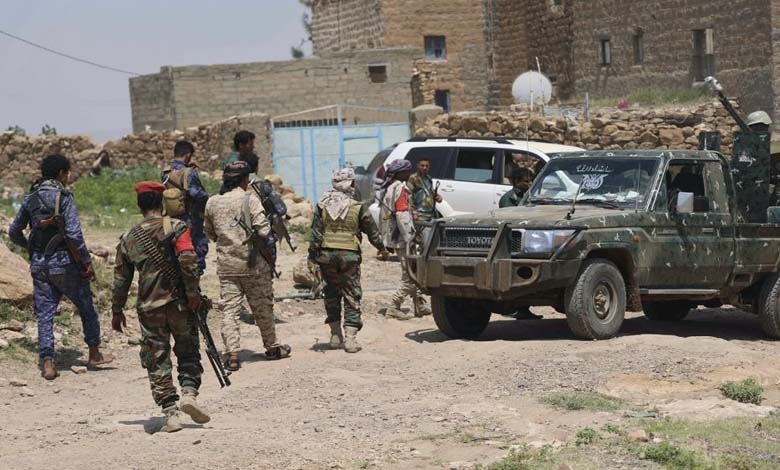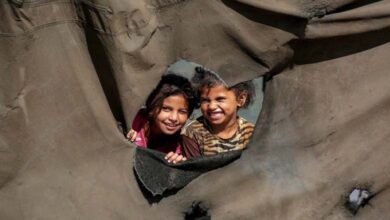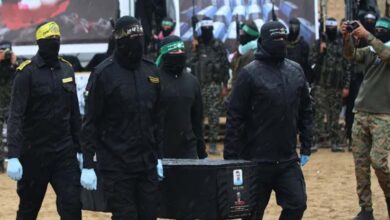The Triangle of Death: how Al-Qaeda militarized the borders of central and southern Yemen

From time to time, Al-Qaeda in the Arabian Peninsula re-emerges on the Yemeni scene through violent attacks and movements launched from the country’s central and southern regions.
This border area, now locally referred to as “the Triangle of Death,” stretches across the liberated governorates of Shabwa and Abyan and the Houthi-controlled governorate of Al-Bayda. It serves as a strategic base from which Al-Qaeda conducts its operations, including ambushes.
Al-Qaeda militants move openly within this region and have set up a security checkpoint only a few meters from positions held by Iran-backed Houthi militias.
Khoura
Within this Triangle of Death lies, according to the same sources, the “Umaizifa” camp in the town of Khoura, located in the lower Markha district in the southwestern corner of Shabwa. Al-Qaeda operates there in remote and rugged areas, bordered on the west by Houthi military positions administratively linked to Al-Bayda.
Khoura is a key passage linking northern and central Yemen to the south via a difficult mountainous route. It is located around 120 kilometers from the provincial capital, Ataq, making its liberation a significant challenge for security and military forces in Shabwa.
Khoura has a population of roughly 70,000 who suffer from a severe lack of services. This has enabled Al-Qaeda to establish, on the border with Al-Bayda, a checkpoint flying black flags, according to a traveler who passed through the area.
On November 9, Al-Qaeda’s targets in Khoura came under American airstrikes. For the first time in years, the strikes targeted a weapons depot and an explosives manufacturing workshop belonging to the group, in an attempt to limit its operational capacity.
Al-Musayni‘a
Beyond Khoura, Al-Qaeda maintains a presence in Al-Musayni‘a, within the Al-Saeed district of Shabwa province, adjacent to the rugged Al-Kur mountain range, which extends to the Al-Mahfad district in Abyan.
On July 25, 2025, Southern forces eliminated the Al-Qaeda emir in Al-Musayni‘a, Abu Awad Saleh Al-Tawsali, during clashes in the Ard Al-Ghasil area of Hatib district.
A military source believes that Al-Musayni‘a and the Al-Kur mountains may have been the launch point for the wide-scale terrorist attack carried out by Al-Qaeda on October 21 against the government complex in Al-Mahfad, using two car bombs and eight suicide bombers.
Although Southern forces efficiently neutralized the attack, it sounded the alarm regarding Al-Qaeda’s expanding capabilities and its determination to maintain influence in Shabwa and Abyan.
Former strongholds in Abyan
In Abyan, clear zones of Al-Qaeda control no longer exist due to military operations conducted by the Southern Transitional Council forces and the Yemeni government.
However, a local source confirmed that the group remains active through cell networks operating in districts such as Mudiya, Jayshan, Al-Wuday‘a and Al-Mahfad. These cells use mountainous routes to reach former strongholds including Wadi Omran and Wadi Rafdh in the eastern part of the province.
Al-Qaeda in the Arabian Peninsula is considered the most dangerous branch of the global network. It has been led since March 2024 by Saad bin Atef Al-Awlaki. According to UN reports, cooperation between the Houthis and the organization has increased, including training Al-Qaeda fighters and providing medical care to their members in Houthi-controlled areas. This reflects a Houthi strategy aimed at consolidating power through tactical alliances.
The agreement between the Houthis and Al-Qaeda to halt hostilities and wage a war of attrition against legitimate government forces remains in effect, and the two sides exchanged prisoners on March 31.












